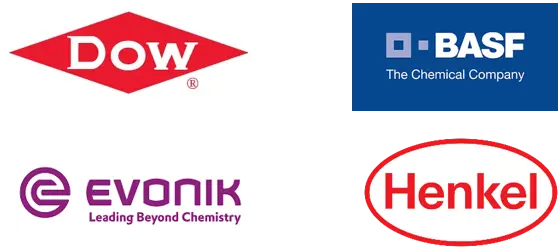Homopolymers Market Overview:
One kind of monomer makes up homopolymers, which are polymers. They are frequently utilized in the fabrication of things from plastic that can reduce a product's weight. Homopolymers have qualities such as a great weight-to-strength ratio, good chemical resistance, weldability, low density, and high moisture resistance, among others. Numerous end-use industries view homopolymers as high-volume goods. One common homopolymer is polypropylene. The strong demand for them in the packaging industry is what drives the market for homopolymers.
This market study on the homopolymers market aims to cover market dynamics, including market drivers, challenges, homopolymers market opportunities for the market players, market segmentation outlook, homopolymers market trend, regional outlook, market size, and market share, SWOT analysis, Porter's five force analysis, PESTEL analysis, heat map analysis, homopolymers market forecast, and the major players operating in the homopolymers market globally.
Homopolymers Market Size and Share:
According to Reports and Insights analysis, the global homopolymers market is estimated to be US$ 61.4 Bn in 2022. Furthermore, the homopolymers market to register a CAGR of 4.5% which is expected to result in market forecast value for 2030 as US$ 87.3 Bn. Based on type the global homopolymers are segmented into food grade, industrial grade, and medical grade; about the end-use industry, the homopolymers can be segmented into automotive, medical, packaging, textile, electrical & electronics, building & construction, and others. By form, homopolymers are categorized into blow molding, injection molding, sheet extrusion & thermoforming. Homopolymers are primarily used in automobiles to reduce the weight of the vehicle and increase its fuel efficiency. Packaging is the most dominant end-user industry for homopolymers.
Homopolymers Market Dynamics:
Market dynamics include market drivers, challenges, market trends, and opportunity that is discussed as follows:
Market Drivers
The market for homopolymers is driven by the substantial demand for them in the packaging industry. The sector benefits from the growing need for homopolymers. Several government-set emission limits and strict environmental regulations to cut carbon emissions are also driving the market for homopolymers. The component's weight is decreased by using homopolymers, improving fuel economy. Improvements in the healthcare sector and industrial infrastructure would likely lead to an increase in the market for homopolymer resins.
Market Challenges
Despite a substantial market demand, the product has significant drawbacks that may slow the expansion of the homopolymer industry shortly. Due to their superior durability and high heat conductivity, copolymers are becoming more and more popular among car makers. This is a significant barrier to the market for homopolymers. That may limit the escalation of the global homopolymers market.
Market Opportunities
Furthermore, customers are buying products through online marketplaces, which is causing the e-commerce industry to expand. Packaging for goods bought through e-commerce sources is becoming more popular recently compared to goods sold through physical channels. This is increasing demand across the board. A huge potential will arise for market participants in homopolymers as a result of the growth of the packaging, automotive, healthcare, and industrial sectors.
Homopolymers Market Regional Outlook:
Six key regions have been identified for the homopolymers market: North America, Latin America, Europe, Asia Pacific, the Middle East, and Africa. In all regions during the projected period, the market for homopolymers is anticipated to rise strongly.
Homopolymers are polymers composed entirely of one kind of monomer. They are often employed in the production of products made from plastic to reduce the weight of a particular product. A few of the qualities that homopolymers have included a great weight-to-strength ratio, good chemical resistance, weldability, low density, and high moisture resistance. In several end-use sectors, homopolymers are regarded as high-volume goods. Homopolymer polypropylene is frequently utilized.
Due to the expanding packaging and consumer products sectors around the world, the market for homopolymers resins is anticipated to expand during the period of forecasting. Due to the region's expanding healthcare and materials sectors, the Asia Pacific region is a big market player with a sizeable share of the overall market. The expanding economies of China and India are anticipated to have a beneficial effect on the market for homopolymers.
Over the projected period, it is anticipated that the expansion of significant end-use industries around the globe will increase demand for homopolymers. Furthermore, because of their high per capita incomes and customers' desire for fabrics and film packaging items, North America and Europe are experiencing market growth. With the increased need for electric batteries and electrical components in all countries, the homopolymers market is gradually growing.
Moreover, due to the expansion of the textiles, packaging, and chemical and material industries in the Middle East & Africa, the market for homopolymers is anticipated to increase steadily in these regions.
Homopolymers Market Key Players:
The global market for homopolymers is highly diverse, and a select few very large suppliers control the majority of the market share. The Dow Chemical Company, L.C.Y. Chemical Corporation, Braskem S.A., Lyondell Basell Industries, Reliance Industries Limited, Sasol Limited, Total Petrochemicals USA Inc., IRPC Public Company Limited, The Polyolefin Company Pte Ltd., and National Petrochemical Industrial Company are significant players in the global homopolymers market.
Homopolymers Market Segmentation Outlook:
The homopolymers market is divided into segments based on grade type, form, end-user industry, and region
By Grade Type
Food Grade
Industrial Grade
Medical Grade
By Form
Blow Molding
Injection Molding
Sheet Extrusion & Thermoforming
Others
By End-User Industry
Automotive
Electrical Industries
Films
Healthcare
Household Goods
Packaging
Pipe
Textiles
Others
By Region
Asia-Pacific
North America
Europe
Latin America
Middle East
Africa

